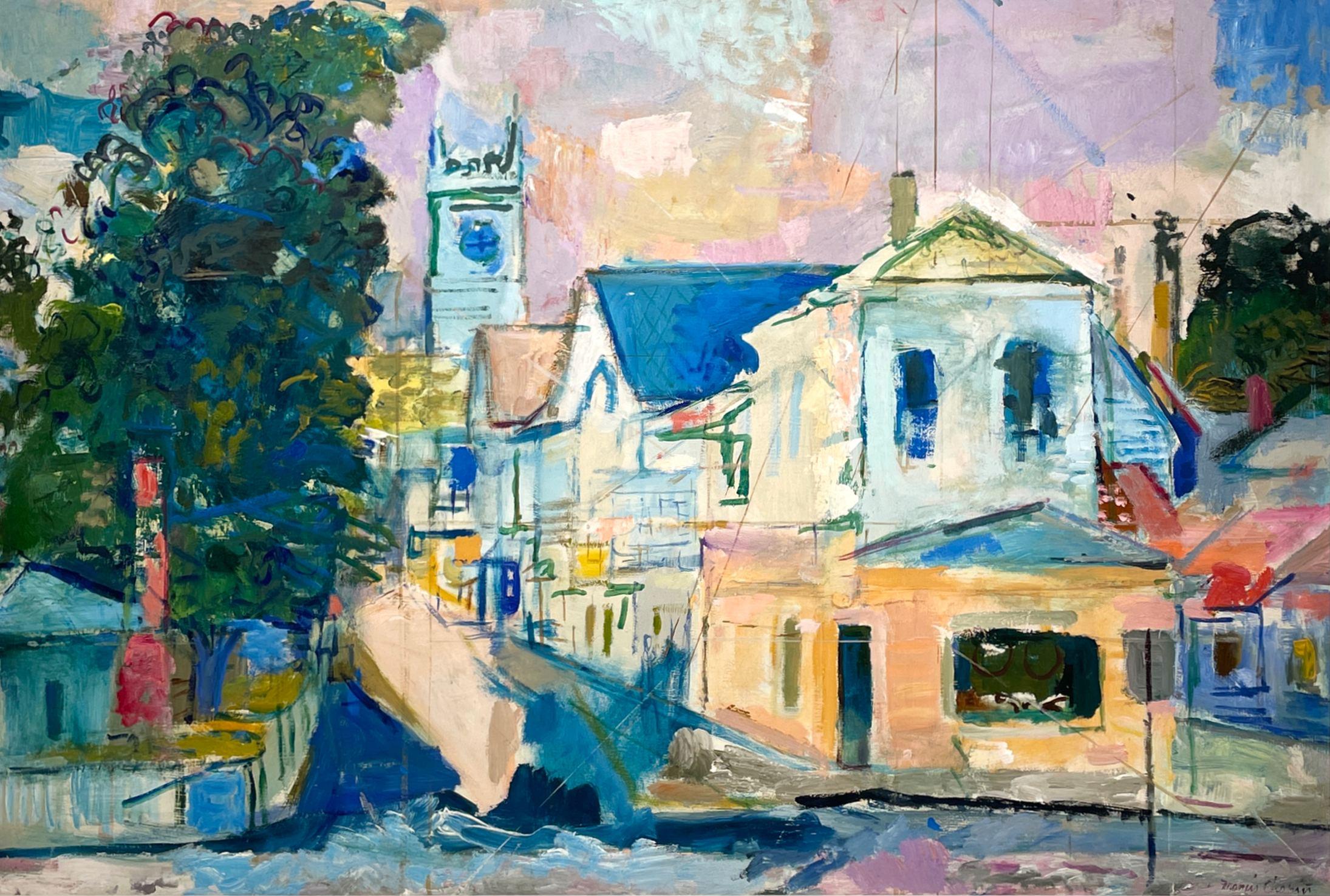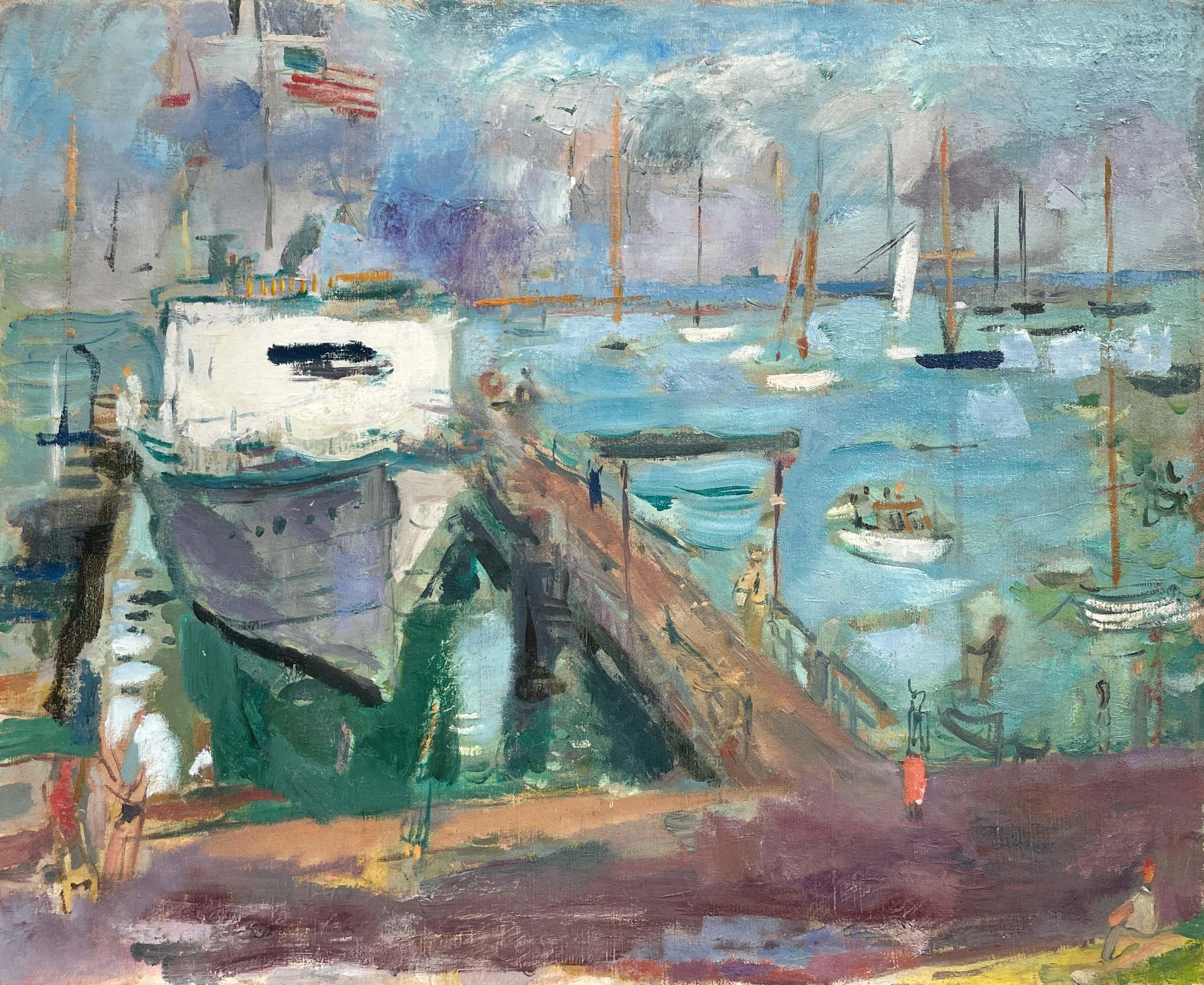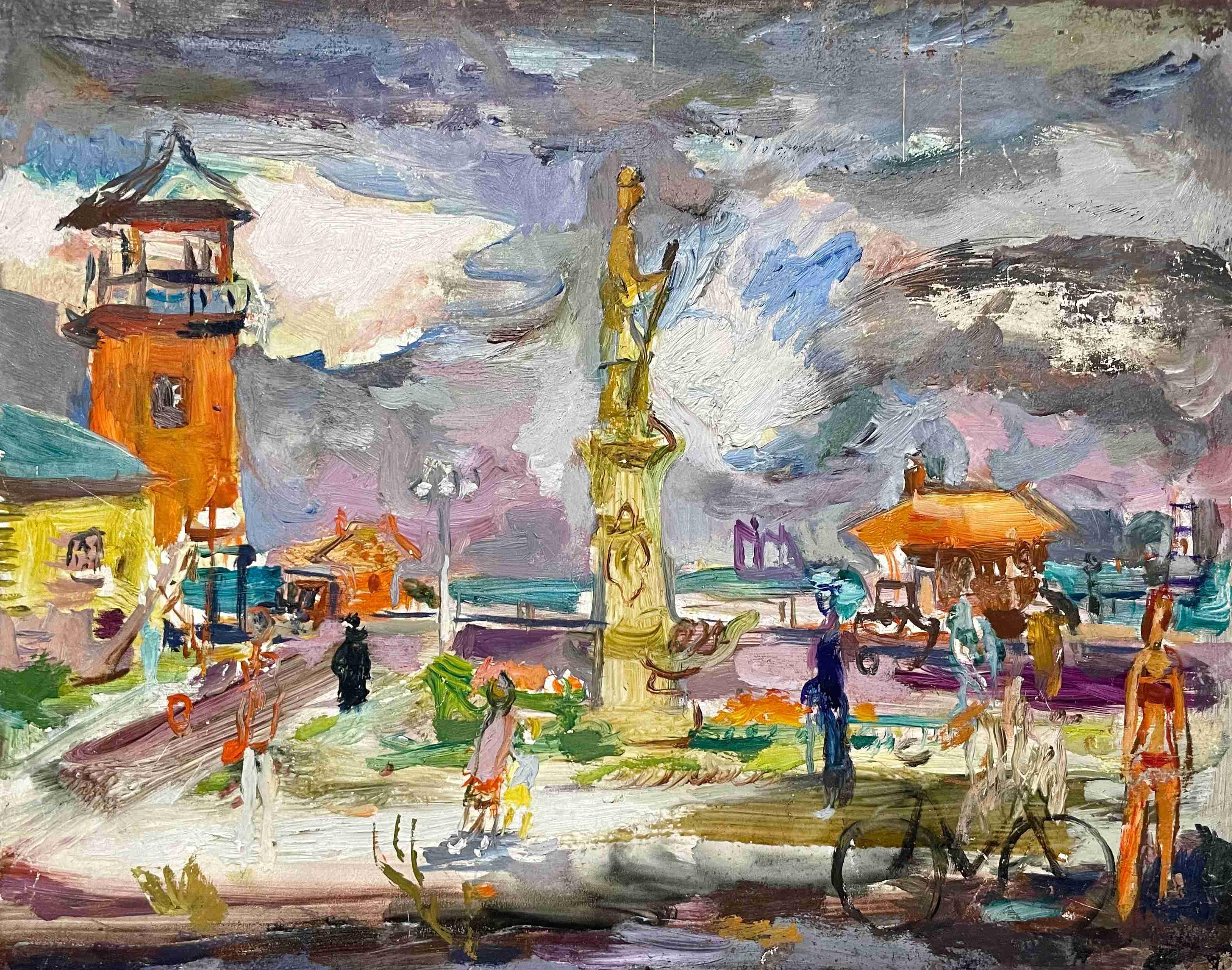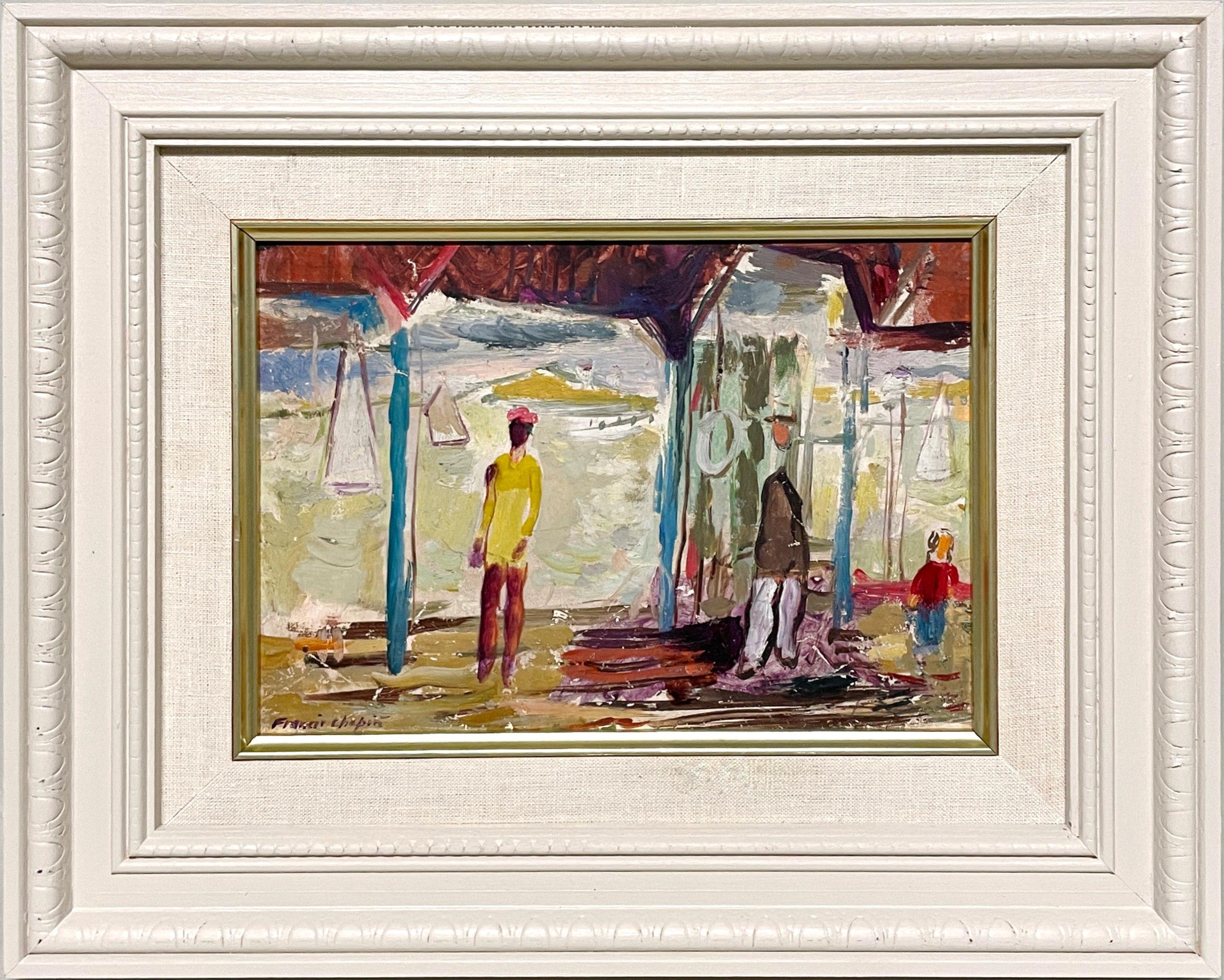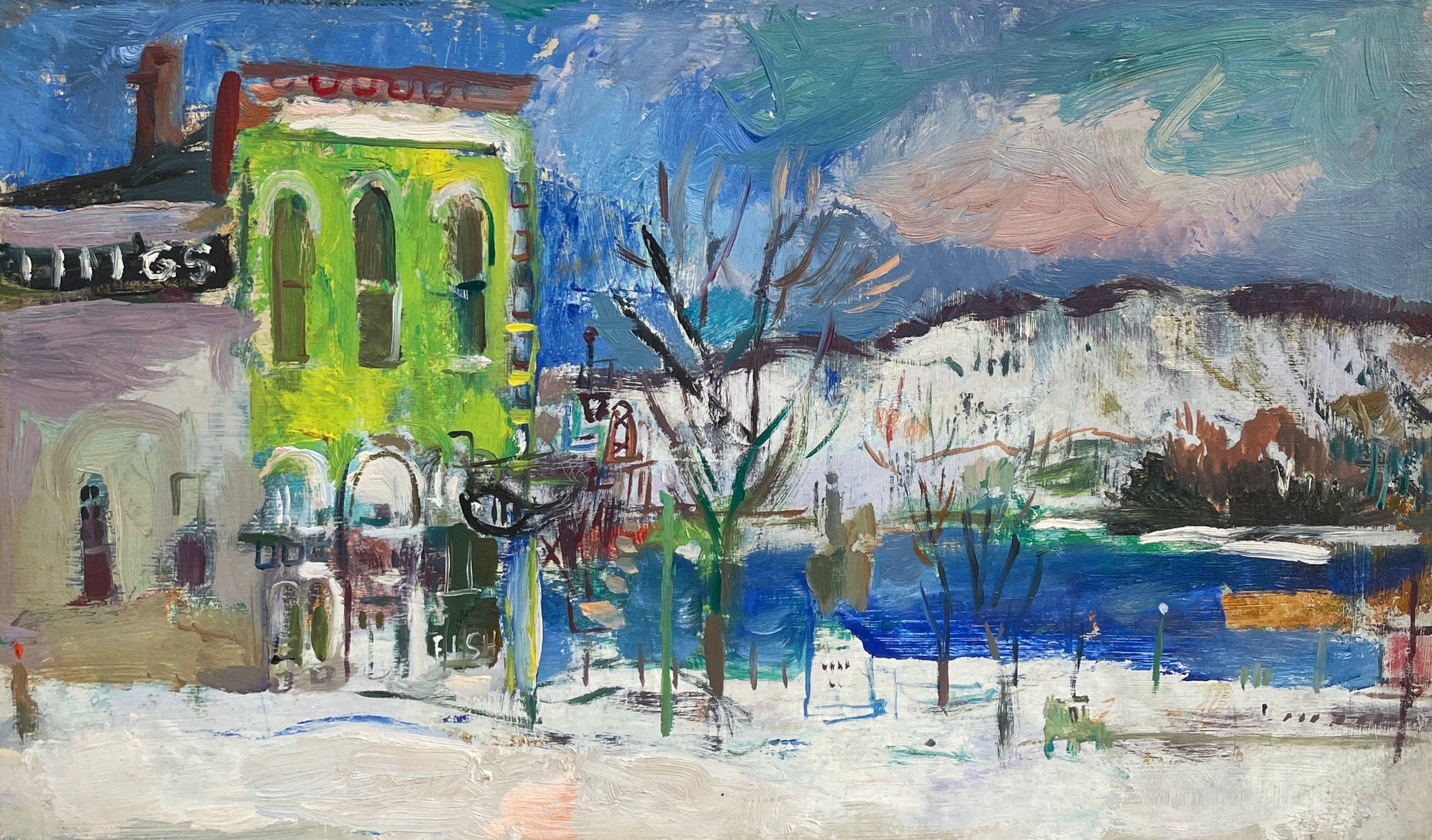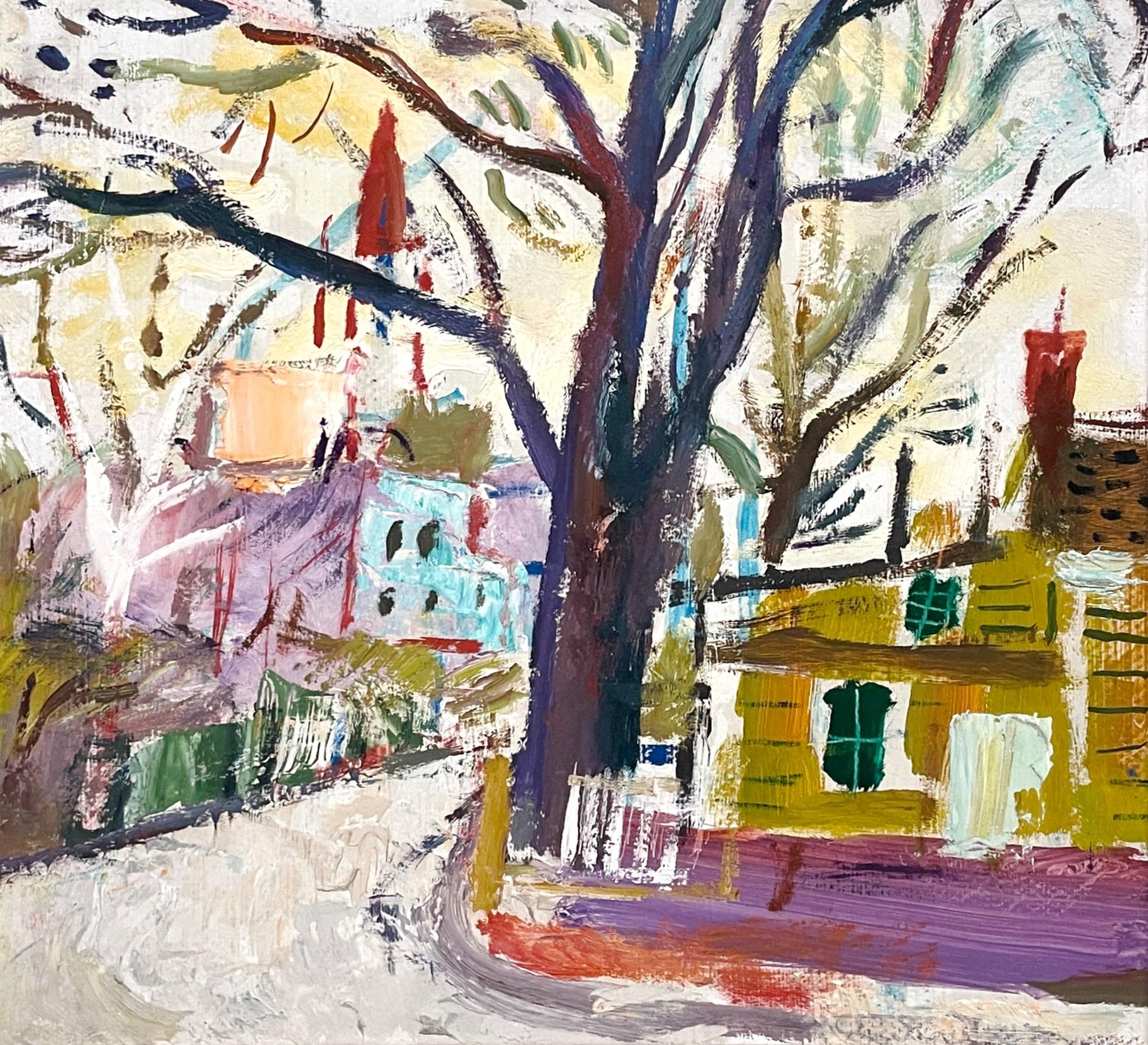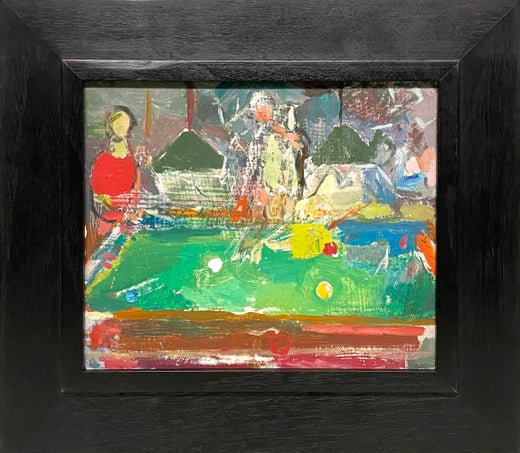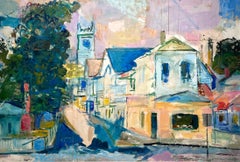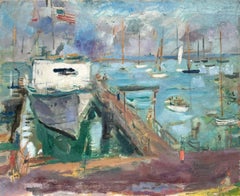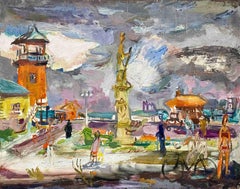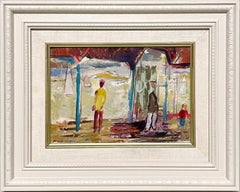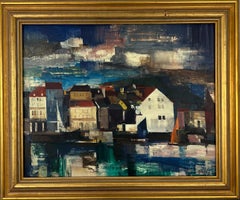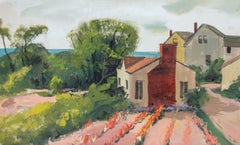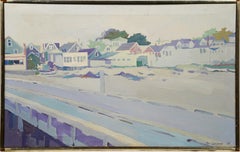Items Similar to A Colorful & Dynamic ca. 1950s Painting of Martha’s Vineyard by Francis Chapin
Want more images or videos?
Request additional images or videos from the seller
1 of 8
Francis ChapinA Colorful & Dynamic ca. 1950s Painting of Martha’s Vineyard by Francis Chapinca. 1950s
ca. 1950s
$1,200
$1,60025% Off
£912.41
£1,216.5425% Off
€1,051.11
€1,401.4825% Off
CA$1,706.08
CA$2,274.7825% Off
A$1,854.22
A$2,472.2925% Off
CHF 979.88
CHF 1,306.5125% Off
MX$22,432.07
MX$29,909.4225% Off
NOK 12,203.75
NOK 16,271.6625% Off
SEK 11,527.20
SEK 15,369.6025% Off
DKK 7,847.70
DKK 10,463.6025% Off
About the Item
A colorful & dynamic ca. 1950s painting of Martha’s Vineyard by notable artist Francis Chapin, featuring The Old Whaler's Church in the background. Artwork size: 12" x 19". Framed size: 15" x 22". Provenance: Estate of the artist.
Francis Chapin, affectionately called the “Dean of Chicago Painters” by his colleagues, was one of the city’s most popular and celebrated painters in his day. Born at the dawn of the 20th Century in Bristolville, Ohio, Chapin graduated from Washington & Jefferson College near Pittsburgh, Pennsylvania before enrolling at the Art Institute of Chicago in 1922. He would set down deep roots at the Art Institute of Chicago, exhibiting there over 31 times between 1926 and 1951. In 1927 Chapin won the prestigious Bryan Lathrop Fellowship from the Art Institute – a prize that funded the artist’s yearlong study trip to Europe. Upon his return to the United States, Chapin decided to remain in Chicago, noting the freedom Chicago artists have in developing independently of the pressure to conform to pre-existing molds (as was experienced by artists in New York, for example). Chapin became a popular instructor at the Art Institute, teaching there from 1929 to 1947 and at the Art Institute’s summer art school in Saugatuck, Michigan (now called Oxbow) between 1934 – 1938 (he was the director of the school from 1941-1945).
A prolific painter, Chapin produced numerous works while traveling in Mexico, France, Spain, Saugatuck and Martha’s Vineyard, where he frequently spent summers and taught at the Old Sculpin Gallery there. Chapin was best recognized for his dynamic and vibrant images of Chicago during the 1930s and 40s. Chapin was a resident of the Old Town neighborhood where he lived and kept his studio on Menomonee Street for many years. Described as a “colorful figure, nearly 6 feet 6 inches tall, and thin, and usually wearing tweeds”, it is easy to imagine Chapin at work observing the busy street life of the city.
In addition to his many exhibitions at the Art Institute of Chicago, Chapin’s work was shown during his lifetime at such institutions as the Pennsylvania Academy of Fine Arts, Philadelphia; the Corcoran Gallery, Washington, D.C.; the National Academy of Design, New York; the Museum of Modern Art, New York; the Whitney Museum of American Art, New York and the Carnegie Institute, Pittsburgh, among others. Francis Chapin’s paintings are represented in the collections the Art Institute of Chicago; the Friedman Collection, Chicago; the Butler Institute of American Art, Youngstown; the Denver Art Museum; the Everson Museum of Art, Syracuse; the Norton Museum of Art, West Palm Beach; the Telfair Museum of Art, Savannah and the Brooklyn Museum of Art, among others.
- Creator:Francis Chapin (1899-1965, American)
- Creation Year:ca. 1950s
- Dimensions:Height: 15 in (38.1 cm)Width: 22 in (55.88 cm)
- More Editions & Sizes:Framed size: 15" x 22"Price: $1,600
- Medium:
- Movement & Style:
- Period:
- Condition:See Photos.
- Gallery Location:Chicago, IL
- Reference Number:Seller: #191791stDibs: LU2591212866262
Francis Chapin
Francis Chapin, affectionately called the “Dean of Chicago Painters” by his colleagues, was one of the city’s most popular and celebrated painters in his day. Born at the dawn of the 20th Century in Bristolville, Ohio, Chapin graduated from Washington & Jefferson College near Pittsburgh, Pennsylvania before enrolling at the Art Institute of Chicago in 1922. He would set down deep roots at the Art Institute of Chicago, exhibiting there over 31 times between 1926 and 1951. In 1927 Chapin won the prestigious Bryan Lathrop Fellowship from the Art Institute – a prize that funded the artist’s yearlong study trip to Europe. Upon his return to the United States, Chapin decided to remain in Chicago, noting the freedom Chicago artists have in developing independently of the pressure to conform to pre-existing molds (as was experienced by artists in New York, for example). Chapin became a popular instructor at the Art Institute, teaching there from 1929 to 1947 and at the Art Institute’s summer art school in Saugatuck, Michigan (now called Oxbow) between 1934 – 1938 (he was the director of the school from 1941-1945). A prolific painter, Chapin produced numerous works while traveling in Mexico, France, Spain, Saugatuck and Martha’s Vineyard, where he frequently spent summers and taught at the Old Sculpin Gallery there. Chapin was best recognized for his dynamic and vibrant images of Chicago during the 1930s and 40s. Chapin was a resident of the Old Town neighborhood where he lived and kept his studio on Menomonee Street for many years. Described as a “colorful figure, nearly 6 feet 6 inches tall, and thin, and usually wearing tweeds”, it is easy to imagine Chapin at work observing the busy street life of the city. In addition to his many exhibitions at the Art Institute of Chicago, Chapin’s work was shown during his lifetime at such institutions as the Pennsylvania Academy of Fine Arts, Philadelphia; the Corcoran Gallery, Washington, D.C.; the National Academy of Design, New York; the Museum of Modern Art, New York; the Whitney Museum of American Art, New York and the Carnegie Institute, Pittsburgh, among others. Francis Chapin’s paintings are represented in the collections the Art Institute of Chicago; the Friedman Collection, Chicago; the Butler Institute of American Art, Youngstown; the Denver Art Museum; the Everson Museum of Art, Syracuse; the Norton Museum of Art, West Palm Beach; the Telfair Museum of Art, Savannah and the Brooklyn Museum of Art, among others.
About the Seller
5.0
Recognized Seller
These prestigious sellers are industry leaders and represent the highest echelon for item quality and design.
Established in 2000
1stDibs seller since 2023
99 sales on 1stDibs
Typical response time: <1 hour
- ShippingRetrieving quote...Shipping from: Chicago, IL
- Return Policy
Authenticity Guarantee
In the unlikely event there’s an issue with an item’s authenticity, contact us within 1 year for a full refund. DetailsMoney-Back Guarantee
If your item is not as described, is damaged in transit, or does not arrive, contact us within 7 days for a full refund. Details24-Hour Cancellation
You have a 24-hour grace period in which to reconsider your purchase, with no questions asked.Vetted Professional Sellers
Our world-class sellers must adhere to strict standards for service and quality, maintaining the integrity of our listings.Price-Match Guarantee
If you find that a seller listed the same item for a lower price elsewhere, we’ll match it.Trusted Global Delivery
Our best-in-class carrier network provides specialized shipping options worldwide, including custom delivery.More From This Seller
View AllA Charming 1950s Martha's Vineyard Street Scene Painting by Francis Chapin
By Francis Chapin
Located in Chicago, IL
A large & delightful oil on Masonite, ca. 1950s, Martha's Vineyard street scene painting by artist Francis Chapin. Image size: 24" x 36". Framed size: 27" x 37". In a painted woo...
Category
1950s American Modern Landscape Paintings
Materials
Masonite, Oil
A Colorful 1950s Martha's Vineyard Harbor Scene by Noted Artist, Francis Chapin
By Francis Chapin
Located in Chicago, IL
A colorful harbor scene of Martha's Vineyard by noted Chicago Modern artist, Francis Chapin (Am. 1899-1965). A vibrant, blustery dockside view, with fishing and sailboats in the har...
Category
1950s American Modern Landscape Paintings
Materials
Canvas, Oil
Charming 1950s Painting "Oak Bluffs, Mass." Martha's Vineyard by Francis Chapin
By Francis Chapin
Located in Chicago, IL
A Charming 1950s painting titled "Oak Bluffs, Mass." (Martha's Vineyard) by notable artist Francis Chapin. artwork size: 8" x 10". Framed size: 12 3/4" x 15". Provenance: Estat...
Category
1950s American Modern Landscape Paintings
Materials
Masonite, Oil
A Charming, 1950s Mid-Century Modern Harbor Scene of Martha's Vineyard
By Francis Chapin
Located in Chicago, IL
A Charming, Colorful 1950s Mid-Century Modern Harbor Scene of Martha's Vineyard by Notable Chicago Artist, Francis Chapin (Am. 1899-1965). Painted near the artist's studio and summe...
Category
Mid-20th Century American Modern Landscape Paintings
Materials
Masonite, Oil
Colorful, Vibrant 1930s Painting of Michigan Dunes, Saugatuck by Francis Chapin
By Francis Chapin
Located in Chicago, IL
A colorful, vibrant 1930s winter scene painting Saugatuck, Michigan by famed Chicago Modern artist, Francis Chapin (Am. 1899-1965). Depicting the Old Fish House on the left, with a ...
Category
1930s American Modern Landscape Paintings
Materials
Masonite, Oil
A Vibrant, 1930s American Modern Painting, Chicago City Street Scene, Old Town
By Francis Chapin
Located in Chicago, IL
A Vibrant, 1930s Chicago City Street Scene of the Old Town Neighborhood by Notable Chicago Modern Artist, Francis Chapin (Am. 1899-1965). Depicting a colorful, blustery, autumn view...
Category
1930s American Modern Landscape Paintings
Materials
Masonite, Oil
You May Also Like
Seashore Town- Mid-Century Modernist Gouache and Oil Painting
Located in Marco Island, FL
A dramatic painting of a seaside town done in bright colors. The abstract American scene style captures the moody sky, and the reflection of water captures the viewer's attention.
...
Category
Mid-20th Century Landscape Paintings
Materials
Oil, Gouache, Board
Flower Garden, Cape Cod, Mid-Century Cleveland School Painting
By Carl Frederick Gaertner
Located in Beachwood, OH
Carl Frederick Gaertner (American, 1898-1952)
Flower Garden, Cape Cod, c. 1940s
Gouache on illustration board
17.5 x 29 inches
27 x 39 inches, as framed
Carl Gaertner was one of the greatest painters to emerge from the Cleveland School...
Category
1940s American Realist Figurative Paintings
Materials
Gouache
Hampton Bays, Watercolor by Eve Nethercott
By Eve Nethercott
Located in Long Island City, NY
Artist: Eve Nethercott, American (1925 - 2015)
Title: Hampton Bays (P6.24)
Year: 1958
Medium: Watercolor on Paper
Size: 22 x 30 in. (55.88 x 76.2 cm)
Category
1950s Expressionist Portrait Drawings and Watercolors
Materials
Watercolor
New England Beach Town Fauvist Palette Modernist Framed Large Oil Painting
Located in Buffalo, NY
Antique American modernist coastal beach town oil painting by Jon Carsman (1944 - 1987). Oil on canvas. Framed. Signed.
Category
1970s Impressionist Abstract Paintings
Materials
Canvas, Oil
$1,996 Sale Price
20% Off
Charles Betremieux (1919-1997) - 1955 Oil, Samois-sur-Seine
By Charles Betremieux
Located in Corsham, GB
An expressive mid-century oil painting by the artist Charles Betremieux (1919-1997). Signed and dated in red ink to the lower left. Titled and dated verso in red ink and pencil. On b...
Category
Mid-20th Century Landscape Paintings
Materials
Oil
"Colorful Mexican Village Scene" Expressionistic Oil Painting on Masonite
By Michael Baxte
Located in New York, NY
A strong modernist oil painting depicted Circa 1960 by Russian painter Michael Baxte. Mostly known for his abstracted figures on canvas or street scenes, this piece is a wonderful representation of his bold still life paintings, with expressive use of color, shape, and form. Later in his career, Baxte explores Expressionism, infusing both European and North American stylistic trends. This piece is from later in his career, but we can feel this underlying style throughout.
Art measures 18 x 21.75 inches
Michael Posner Baxte was born in 1890 in the small town of Staroselje Belarus, Russia. For the first half of the 19th century it was a center of the Chabad movement of Hasidic Jews, but this group was gone by the middle of the 19th century. By the time the Baxte family immigrated to the United States at the beginning of the 20th century, the Jewish population numbered only on the hundreds. The native language of the Baxte family was Yiddish. It is likely that the death of Michael Baxte’s father triggered the family’s immigration. Three older brothers arrived in New York between 1903 and 1905. Michael and his mother, Rebecca, arrived in 1907. By 1910 Michael, his mother, and brother, Joseph, were living in New Orleans and may have spent some time on a Louisiana plantation. Around 1912, Michael Baxte returned to Europe to study the violin. In 1914 he, his mother, and Joseph moved to New York City.
Meanwhile, in Algeria, a talented young woman painter, Violette Mege, was making history. Since for the first time, a woman won the prestigious Beaux Art competition in Algeria. At first, the awards committee denied her the prize but, with French government intervention, Mege eventually prevailed. She won again 3 years later and, in 1916, used the scholarship to visit the United States of America. When Violette came to New York, she met Baxte, who was, by then, an accomplished violinist, teacher, and composer. Baxte’s compositions were performed at the Tokyo Imperial Theater, and in 1922 he was listed in the American Jewish Yearbook as one of the prominent members of the American Jewish community. As a music teacher he encouraged individual expression. Baxte stated, “No pupil should ever be forced into imitation of the teacher. Art is a personal experience, and the teacher’s truest aim must be to awaken this light of personality through the patient light of science.”
By 1920 Michael Baxte and Violette Mege were living together in Manhattan. Although they claimed to be living as husband and wife, it seems that their marriage did not become official until 1928. On their “unofficial” honeymoon around 1917, in Algiers, Baxte confided to her his ambition to paint. There and later in New Mexico where the wonderful steeped sunlight approximates the coloring of Algiers, she taught him his heart’s desire. He never had any other teacher. She never had any other pupil. For ten years she devoted all her time, energy, and ambition to teaching, encouraging, inspiring him. Then in 1928, their mutual strivings were rewarded, as his works were being chosen as one of the two winners in the Dudensing National Competition for American Painters. Out of 150 artists from across the country participated in the Dudensing, and Michael Posner Baxte and, Robert Fawcett, were the winners.
In his 1924 naturalization application, he indicated that he was sometimes known as “Michael Posner Baxte.” One of the witnesses to his application was Bernard Karfiol, a Jewish American artist. That’s when Michael may...
Category
1960s Expressionist Landscape Paintings
Materials
Oil, Masonite
More Ways To Browse
Vineyard Landscape Painting
Vineyard Oil Paintings
1950s Painting Landscape American
Paintings Of Vineyards
Marthas Vineyard Painting
1944 Oil
Byam Shaw
Forest Hills
Keith Oil Painting
Vintage Farm Scenes
Yorkshire Landscapes
Antique Maritime Paintings
Architecture San Francisco
California Impressionism
Cotswold Art
English Countryside Landscape Painting
New England Oil Paintings
St John Paintings
